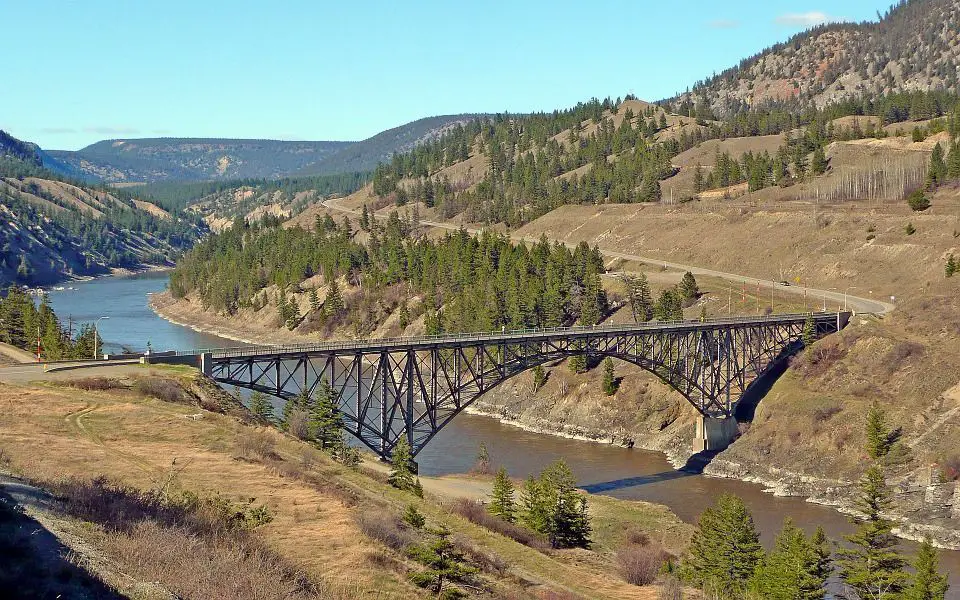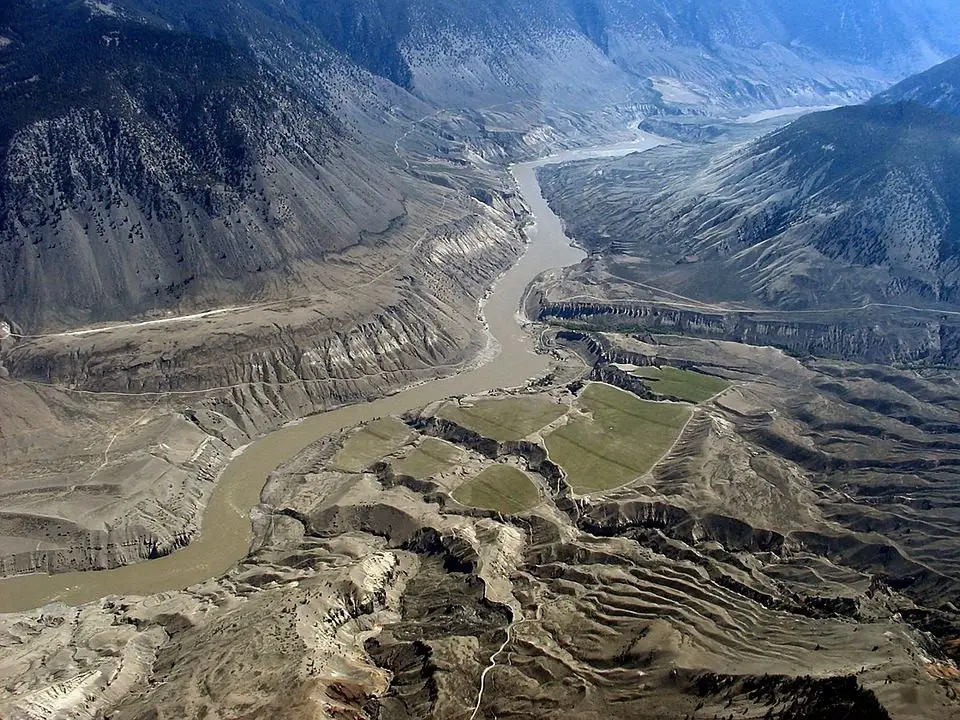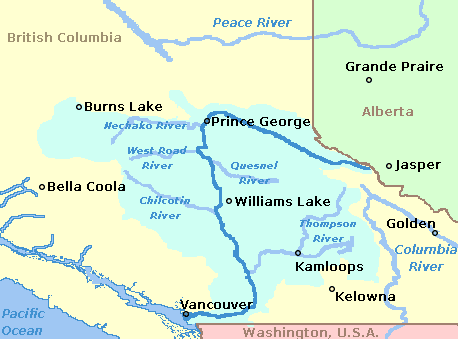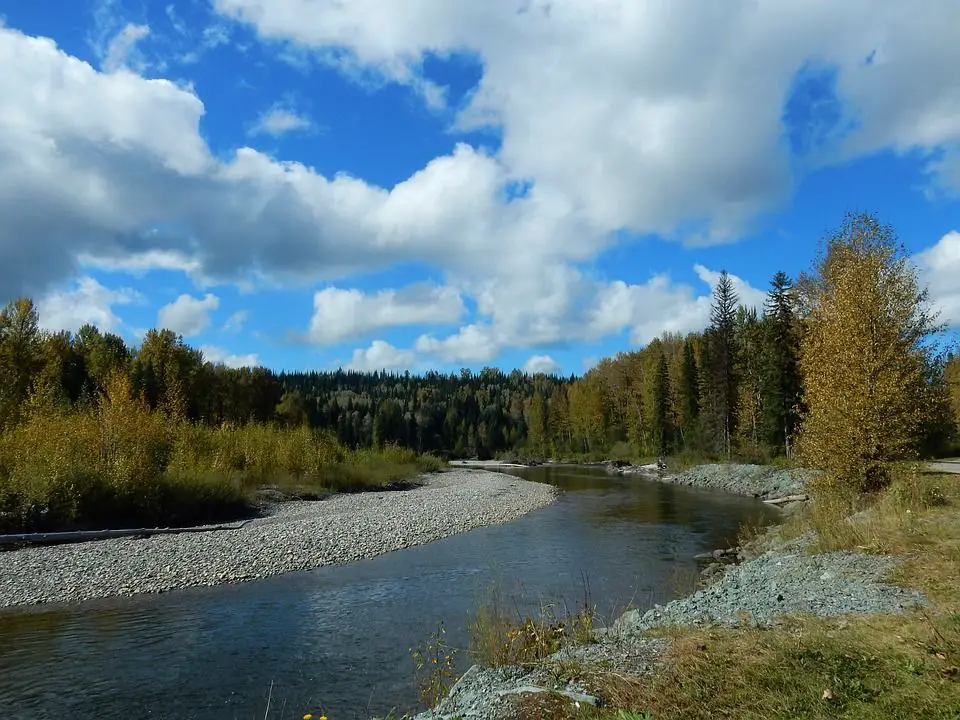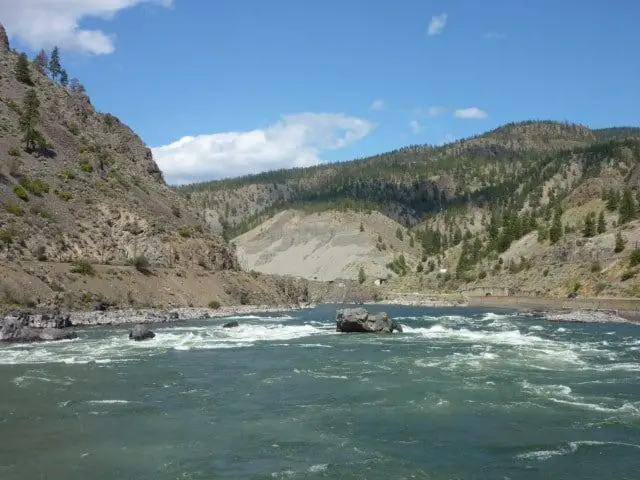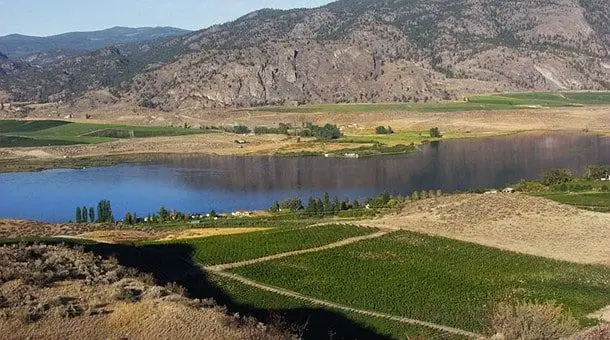However, the natural beauty of the Fraser River’s course (particularly its spectacular canyon section) and the surrounding countryside has remained relatively unspoiled. The river was named after Simon Fraser, who first descended it into the Pacific Ocean in 1808. The Cariboo Gold Rush, which began in 1858, took place in the Fraser River Basin.
Indice De Contenido
Fraser River Basin
From its source at Yellowhead Lake on the border of British Columbia and Alberta, the Fraser River flows 851 miles (1,370 km) to its mouth in the Strait of Georgia. From its mountainous source, the river initially flows northwestward, descending gently along the Rocky Mountain Trench (see article: Tonala River).
Near latitude 54° N, the river makes a sharp turn to the south to cross the interior plateau and then the Coast Mountains. Entrenchment and gradients increase downstream, and through the Coast Mountains the raging water flows through a canyon some 1,500 metres (5,000 ft) deep.
Below this canyon, the Fraser turns westward to flow gently through a floodplain to its mouth near Vancouver, B.C. The Thompson River joins the Fraser about 145 miles (235 km) from its mouth.
It is the most important of many tributaries, many of which originate in large mountain lakes. Navigation is important only at the tidal estuary, where New Westminster serves ocean-going vessels.
Location and map of the Fraser River
The Fraser River, the most important river in western North America, drains a vast and scenic region of about 92,000 square miles (238,000 square km) in central British Columbia. About 70 per cent of the drained area is over 3,000 feet (900 m) in elevation, and human exploitation of this relatively isolated area is relatively recent (see article: Papagayo River).
Economy
The economy of the Fraser River watershed is primarily based on forestry. Coniferous forests cover most of the interior plateau, except in the dry valleys to the south, which are covered by narrow strips of grassland on the lower slopes (see article: Ameca River).
Before 1940, small sawmills cut some timber along the three railway lines that crossed the watershed. After 1950, however, the northward extension of the Pacific Great Eastern Railway (later called the British Columbia Railway).
And improved roads made the forests more accessible, and the consolidation of smaller companies, along with the introduction of pulp, chip and small-tree mills, increased the use of forest resources.
Forest products are shipped to Vancouver for overseas markets, or by rail east to central Canada and the Midwest United States. The turbulent Fraser River itself is not used in the forest industry, even to transport logs to sawmills.
Agriculture has not developed much in the river basin, except for cattle ranching in the upper grasslands and parklands of the Chilcotin Plateau west of the Fraser River and the Nicola Valley south of the Thompson River.
Cattle ranching was established in the 1860s to supply the gold mining camps and then, after gold mining declined, to provide meat for the growing city of Vancouver.
The Fraser River is the main producer of salmon in British Columbia, and its tributaries and reservoirs are the spawning grounds for several species of salmon. These salmon migrate up the river in late summer to spawn and then return downstream the following year to spend the next two to three years in the ocean (see article: Sava River).
Because of these migratory habits, salmon fishing takes place mainly off the mouth of the Fraser River, and only the Indians have fishing rights in the river basin itself. Hydroelectric development of the river system may eventually threaten salmon migration.
Fraser River Salmon
The Fraser River and its tributaries are home to one of the world’s most productive salmon fisheries, supporting five species of Pacific salmon: sockeye, coho, chum, chinook and pink. Salmon eggs hatch in freshwater, but salmon spend most of their lives in the ocean before migrating upstream to spawn.
Many species of fish are found in the river, including rainbow and brown trout, river and Pacific lamprey, eulachon, surf and longfin hedgehog, northern white carp, peony carp, red-hoofed carp, longnose carp, several species of gudgeon and thornyhead carp.

